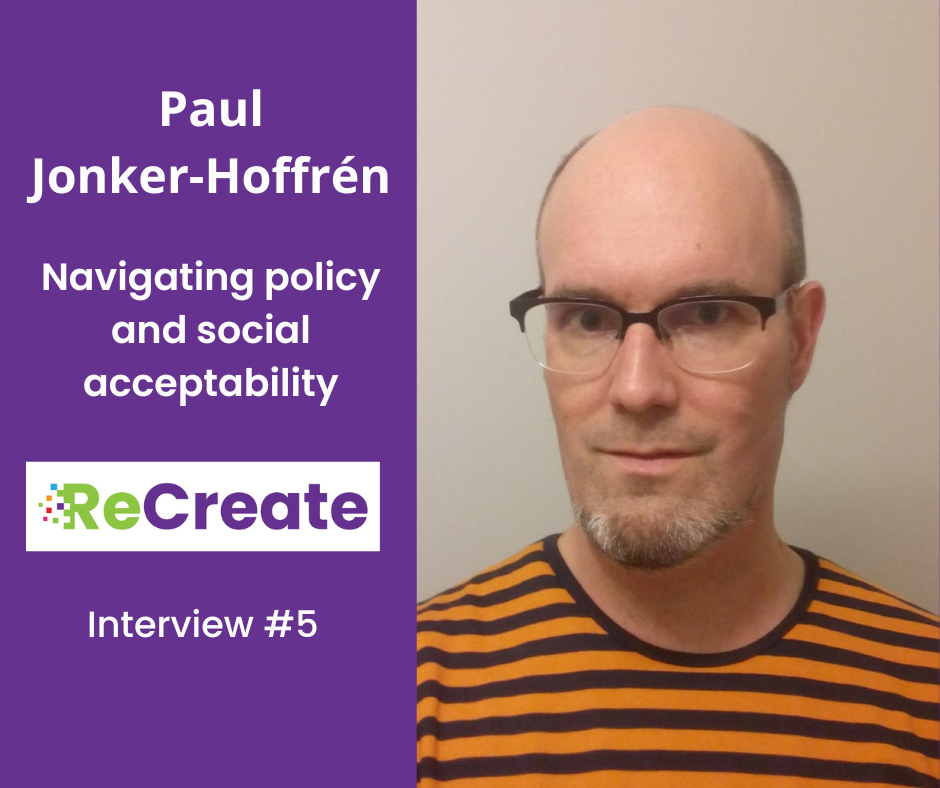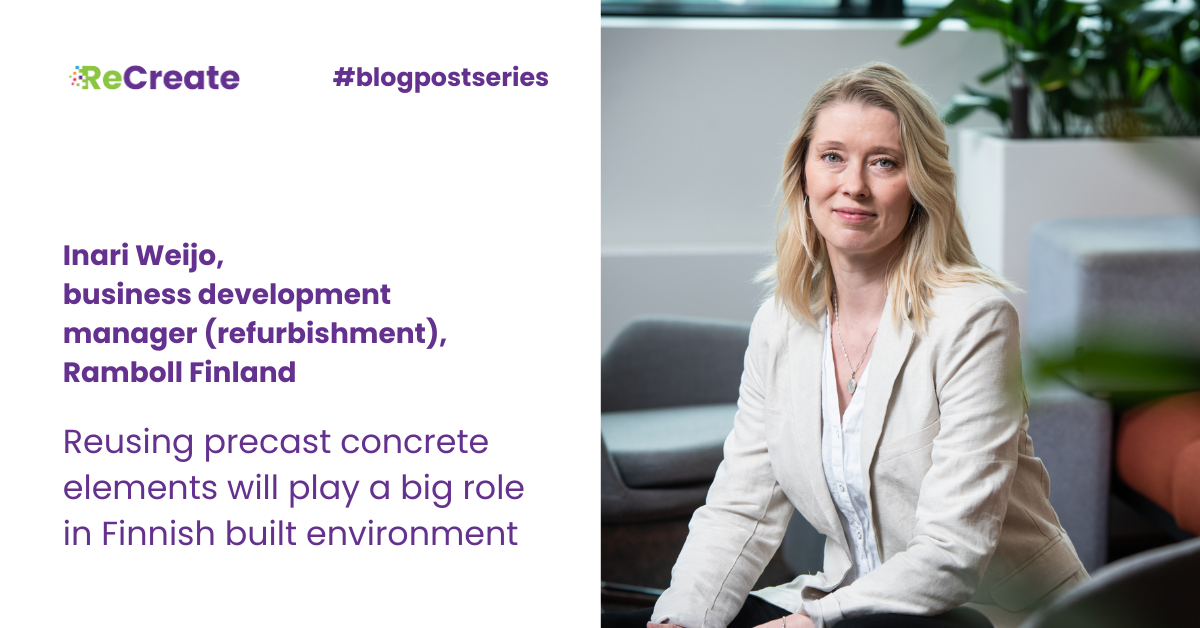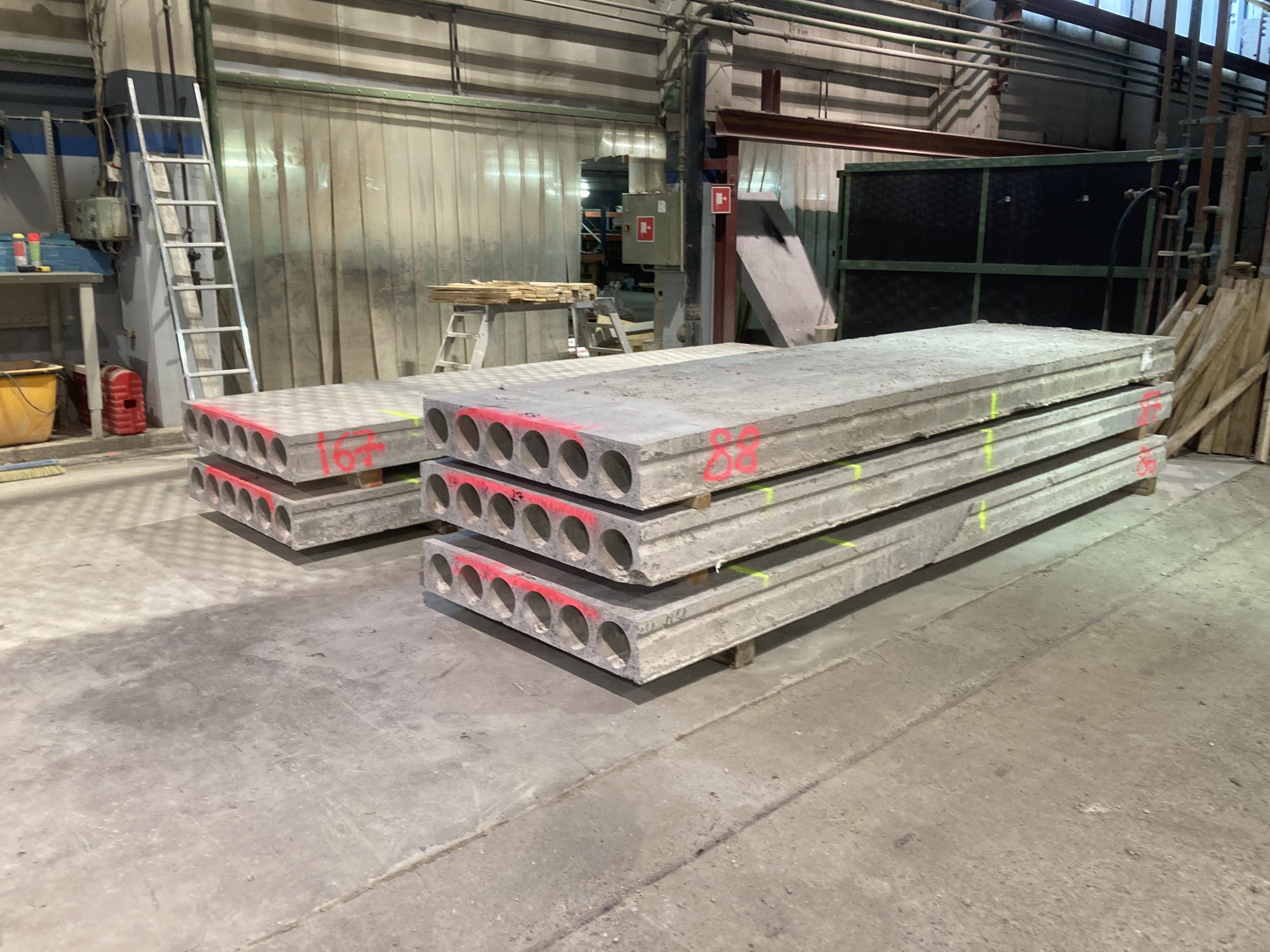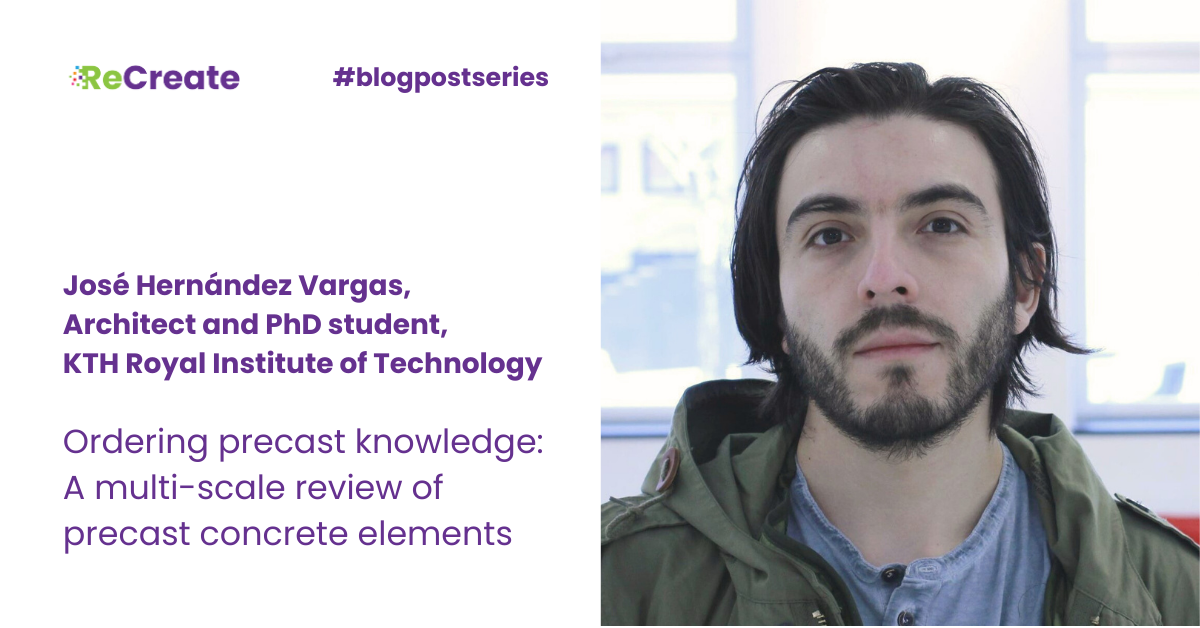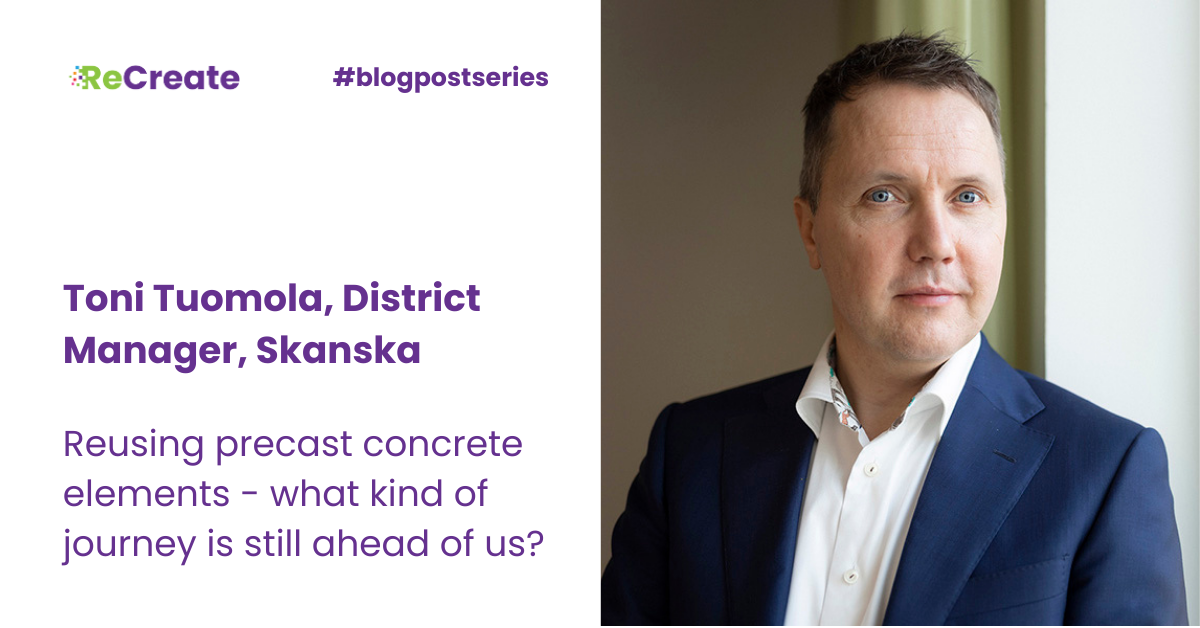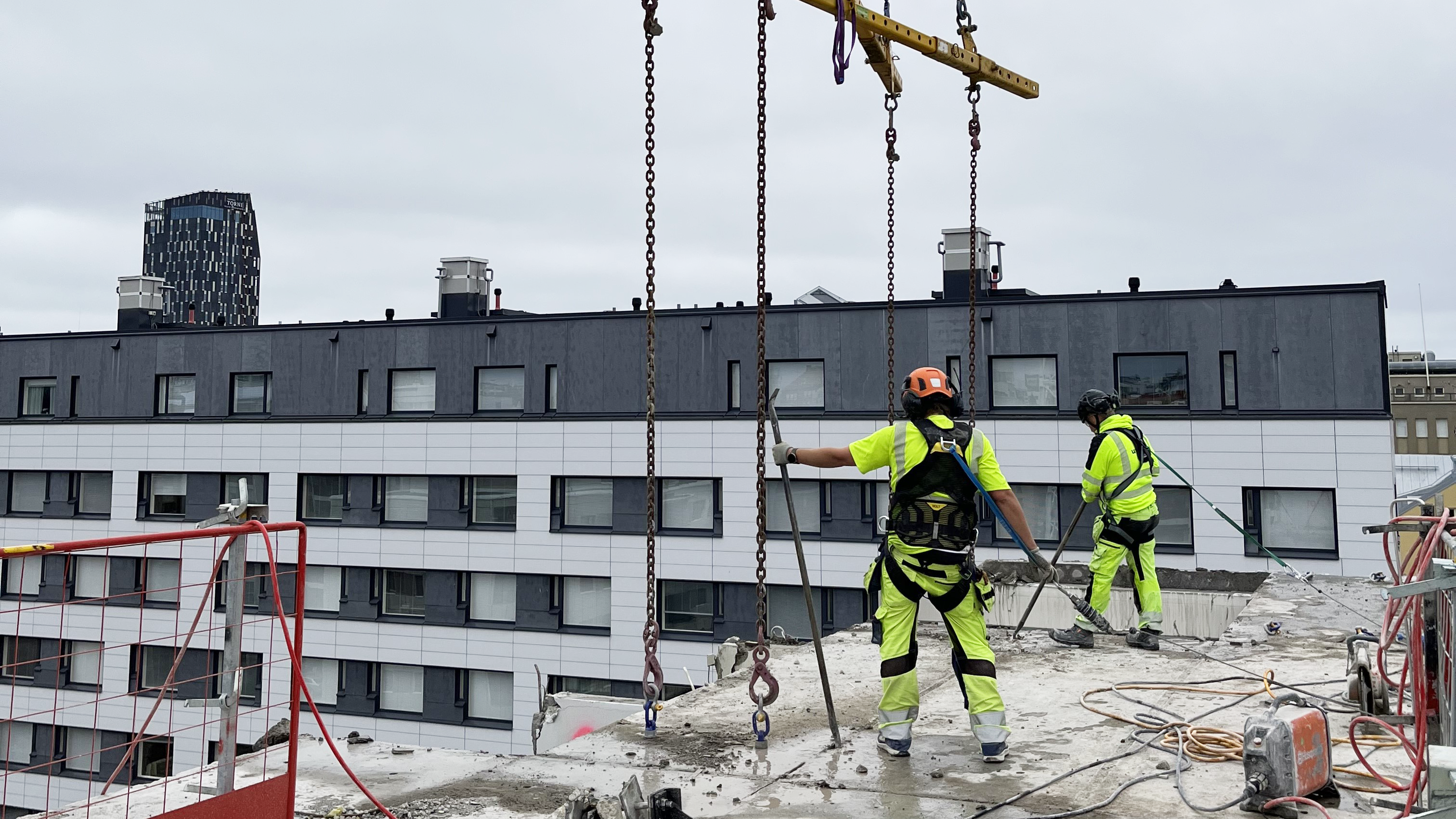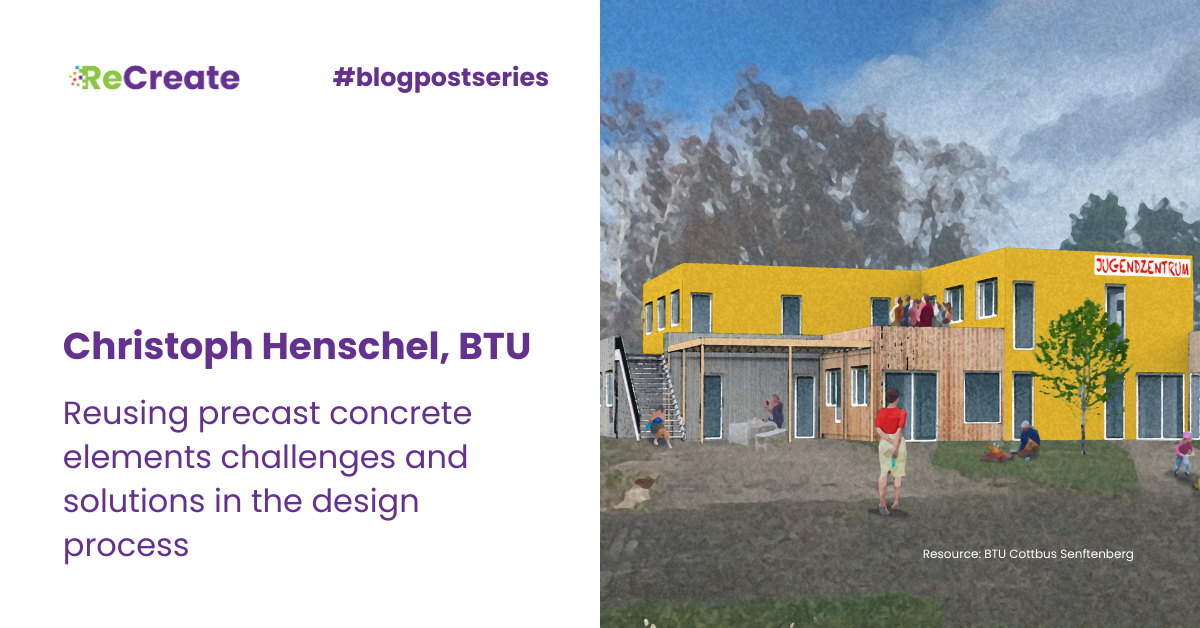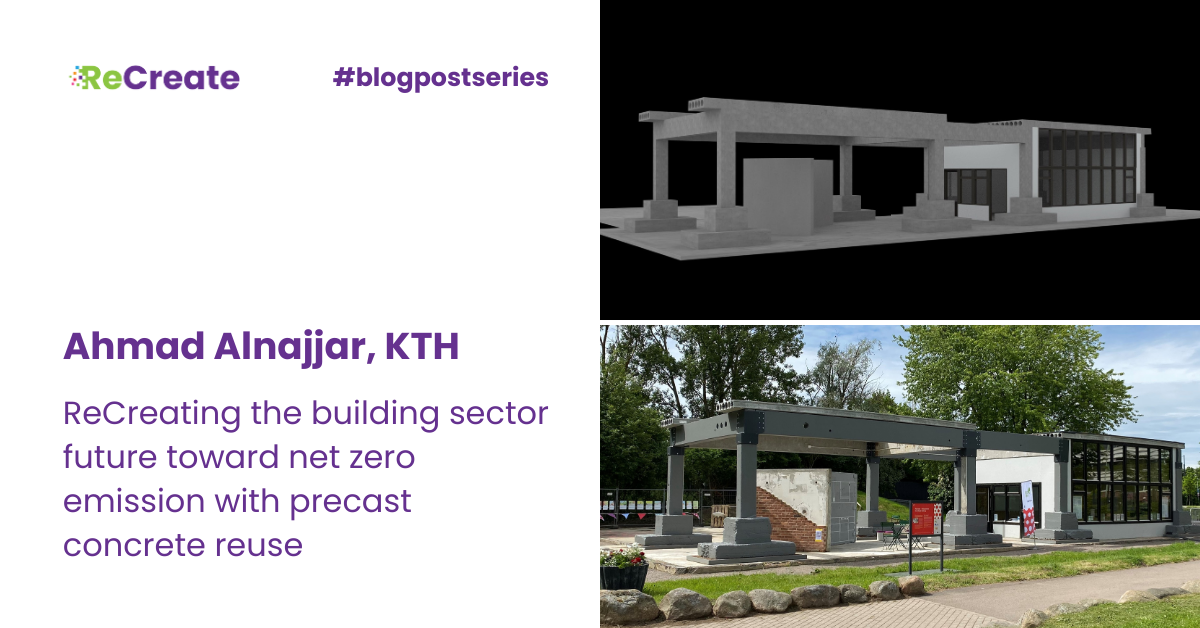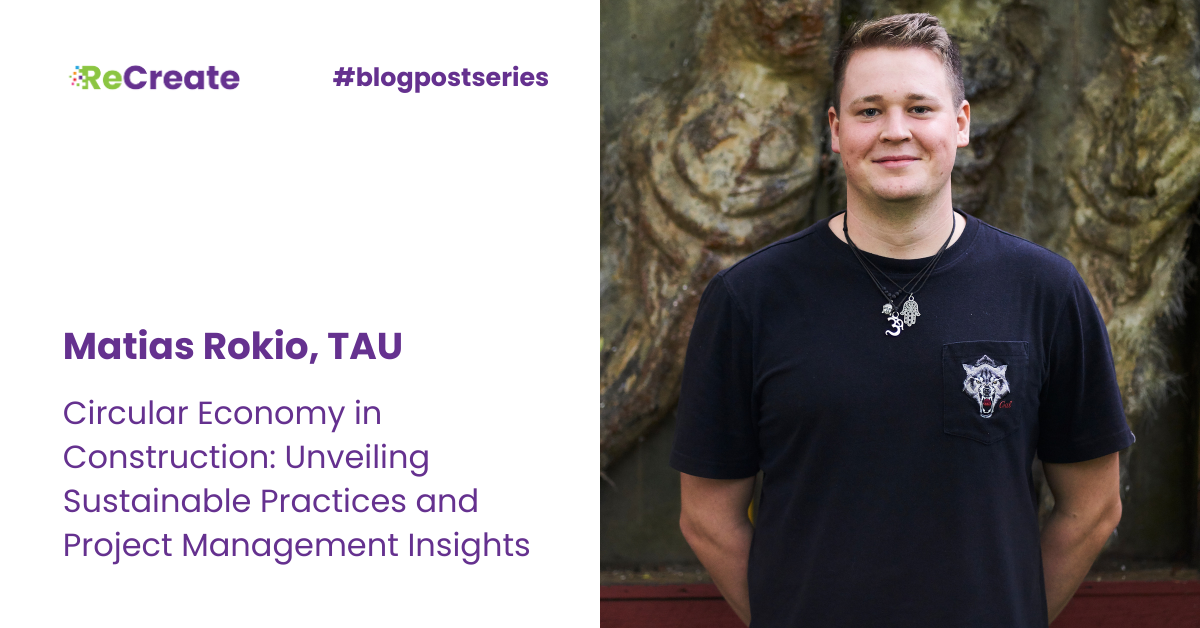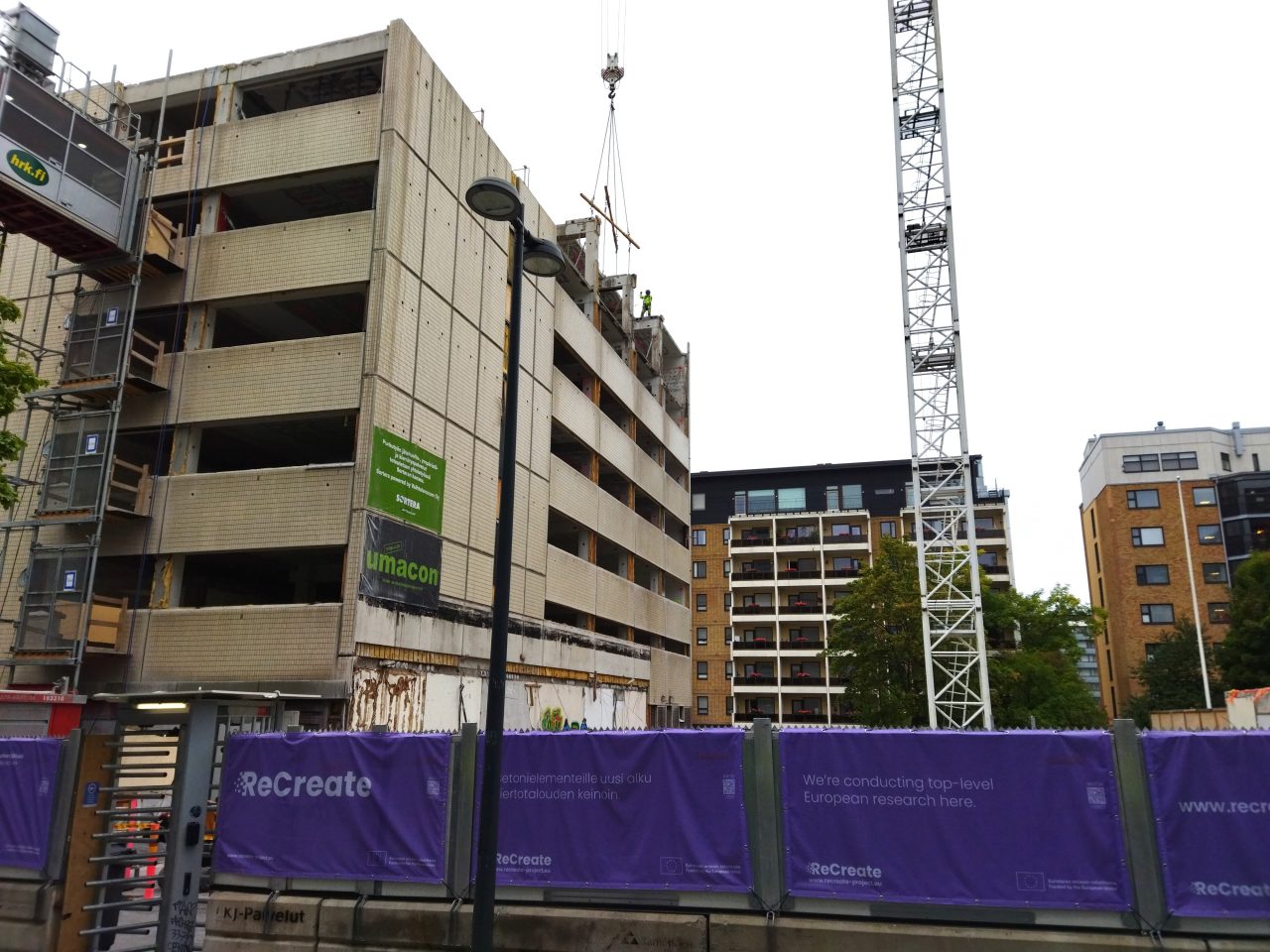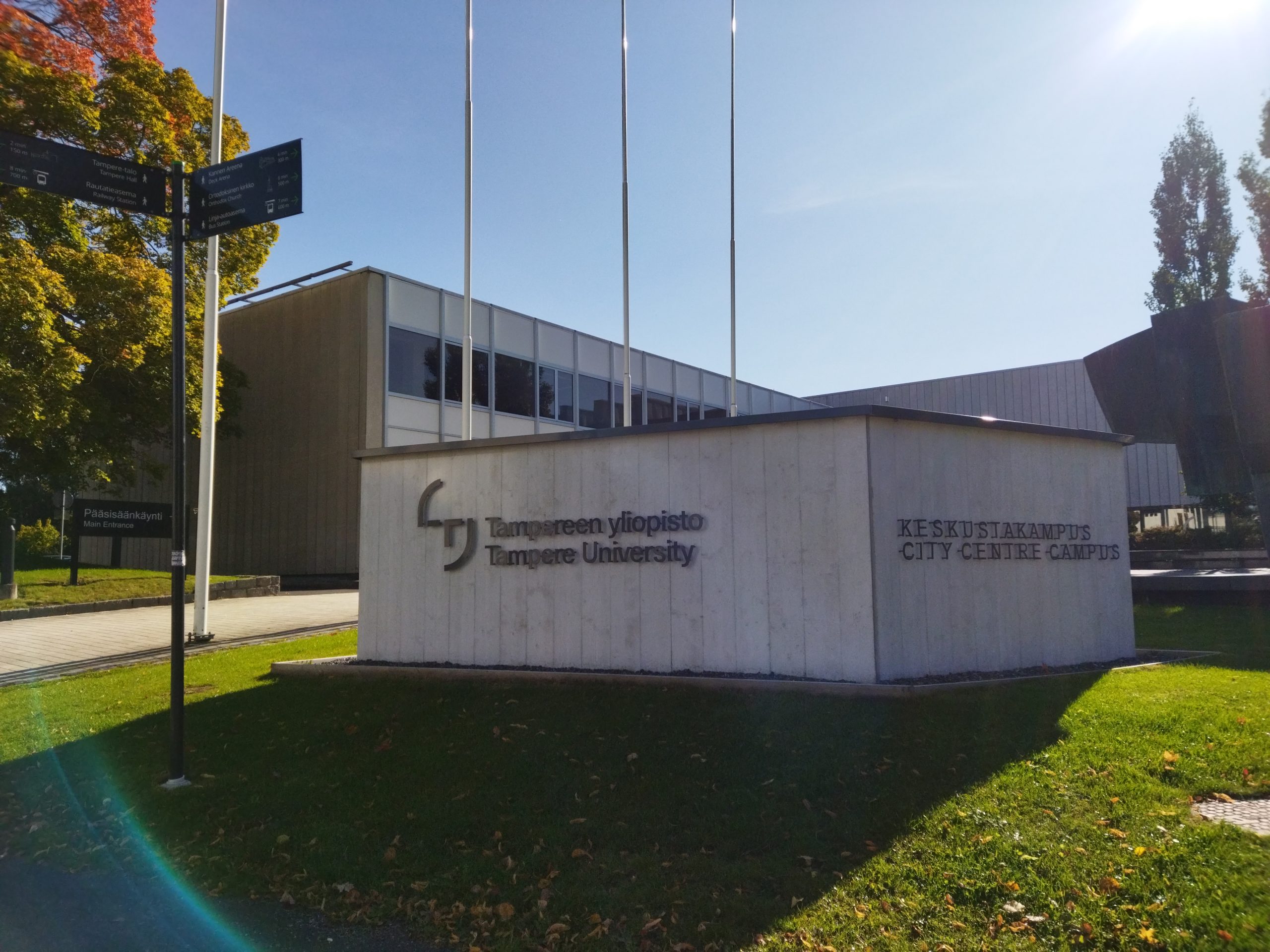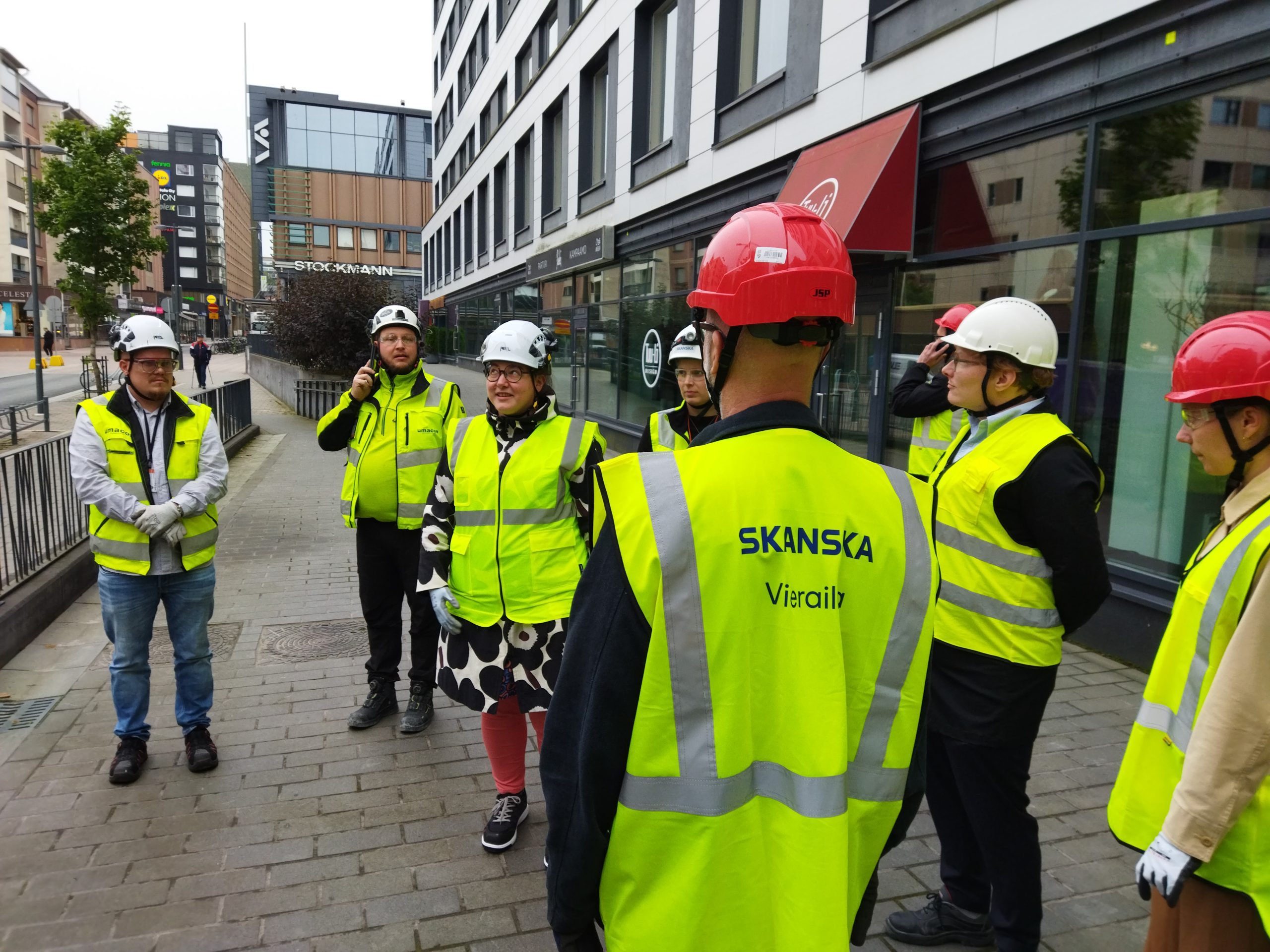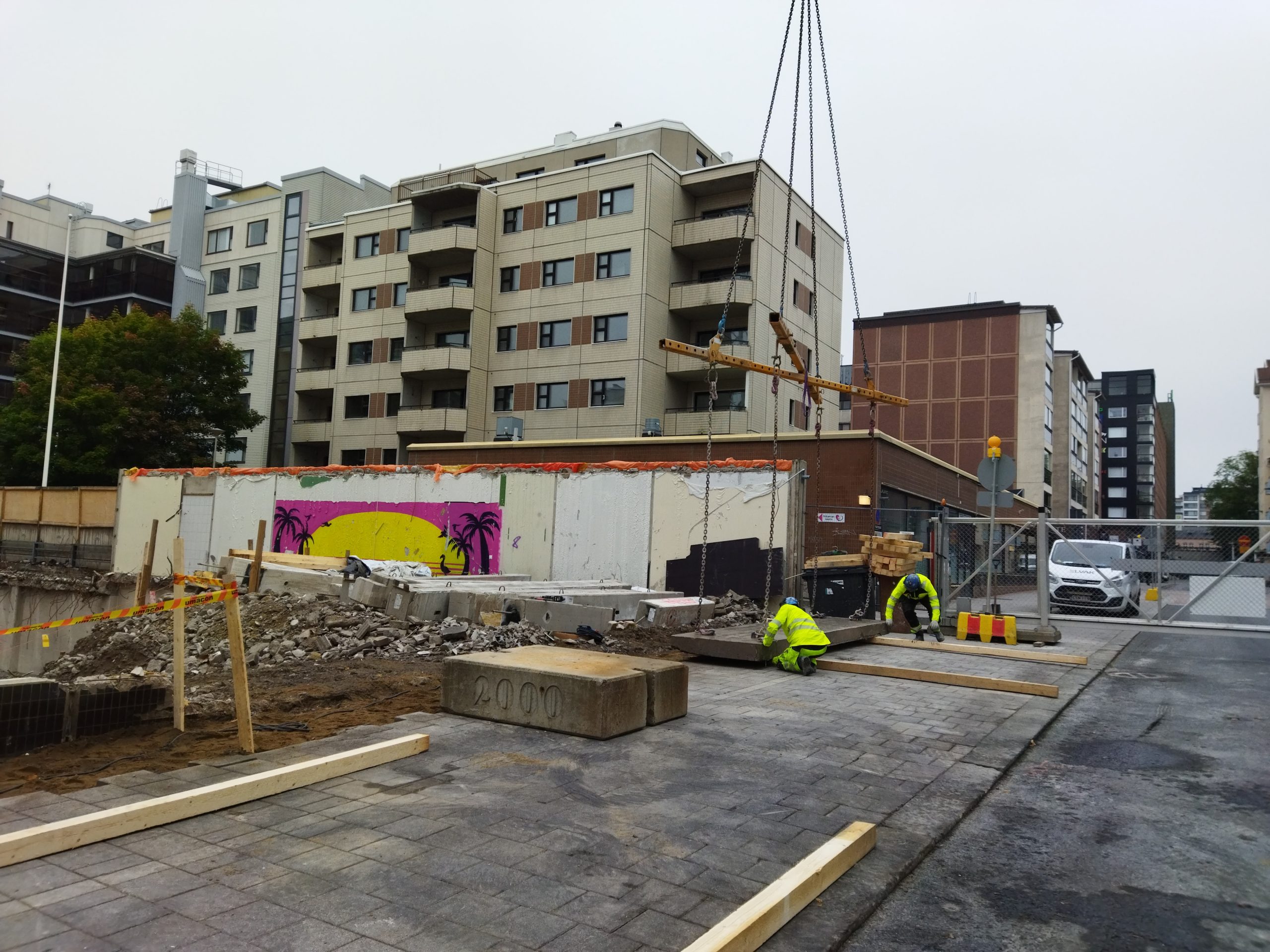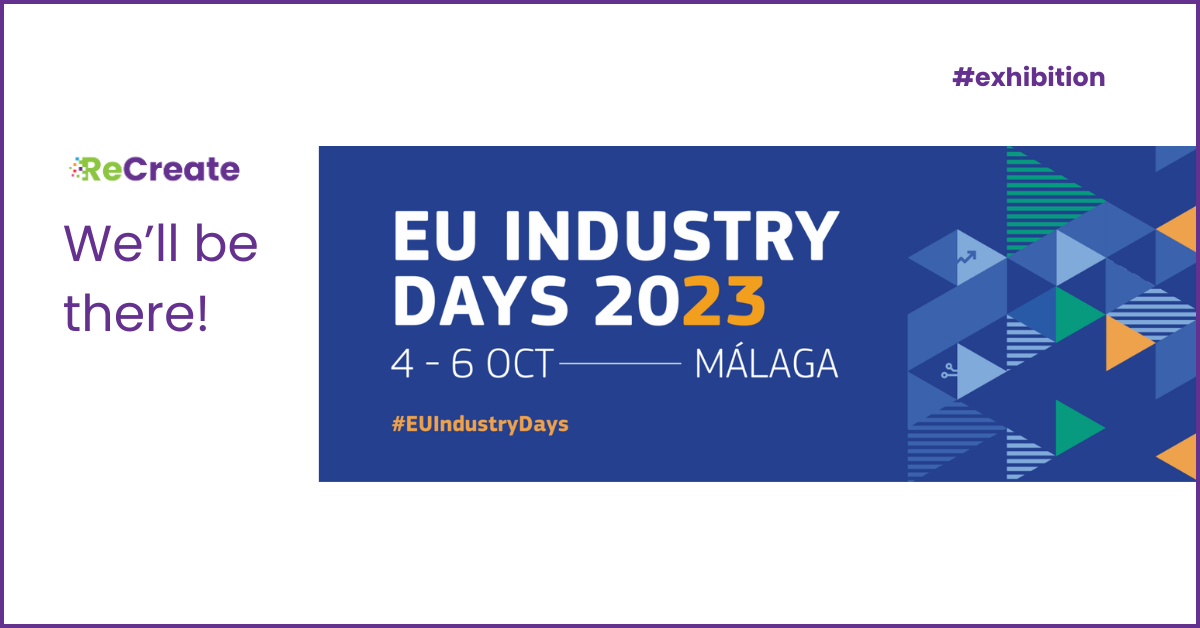We are privileged to continue our interview series featuring the talented individuals behind the ReCreate project. In this edition, we showcase Paul Jonker-Hoffrén, who focuses on policy issues related to circularity in construction and labor market.
Can you introduce yourself a bit, and tell us about your background and role in your institution and the project?
I’m originally Dutch, but I’m living in Finland. I have a background from the Netherlands in public administration and public policy research. It involves policy analysis studies and a bit of law in economics and sociology. However, until this project, I did not deal with it professionally. In Finland, I got my doctorate in labour sociology. In Finland, I’m working on labour market issues in labour market relations issues, such as relating to self-employment, the possession of labour unions etc. ReCreate Project to me is an opportunity to combine public administration and public policy research with labour market issues. In this project, I can focus on the policy aspects of circularity in construction as well as labour market issues. In my Work Package, we study work processes and the skills needed in the future to maintain the labour market for construction.
Can you provide an overview of your Work Package, its objectives and why are policy support and social acceptance important for reused precast concrete components?
My Work Package has two distinct things. The first one is about policy regarding circularity in construction and how those policies relate to legislation. The second is focusing on work process analysis. I’m not interested in how many people will be working in a circular construction, but I’m interested in studying how the work of current builders, architects and civil engineers would change through the idea of circularity. For some of them, things will change, and for some, it won’t. For example, for architects, we have to invent new methods. Regarding its objectives, they are here to make visible the policy environment in which this reuse happens and what kind of impact it has on work processes.
It is important to know where the material comes from. If you think of demolishing whole city blocks of obsolete buildings and when you apply the ReCreate methods or any kind of reuse to that kind of scale then you also have to include the social aspects of this reuse because you have to have in mind that people who are living in those buildings have to go somewhere. Including all of this, social acceptability is important in the scalability of reuse because there has to be enough social support for this kind of urban renewal program.
What specific stakeholders are involved in the examination of legal possibilities and barriers at the EU, national, and local levels for the reuse of precast concrete components?
Our second deliverable in this Work Package answers this question, but it is not public yet. There is a lot of EU legislation on this and there are many directives which are involved. For example, the revision of the waste directive is now translated into National legislation and it will become active in 2028 or later. As this project ends in 2025 it won’t apply to us in that sense so at this moment we depend on National legislation. In the second deliverable, we have an overview of the valid norms for our four countries. It includes information on building permits, environmental law, work safety, waste issues and that kind of material standards (what kind of material should be used).
At the local level, you have many different stakeholders in the legal policy environment and they vary a lot between our countries. That is because you have, on one hand- administrative rules, and on the other- responsibility for supervising construction safety.
How does the evaluation of social acceptability differ for the stakeholders involved in the circular value chain, including the impact on work and employment for the company stakeholders?
The social acceptability for stakeholders begins with profitability. For example, in Germany, there is quite a lot of experience with reusing concrete elements for various purposes. There are traditional DDR styles, big houses, but people are leaving because there’s a lot of free housing or empty housing- houses are too big. The solution was to cut off the top floors of this DDR building and make what was left into more modern and smaller housing units. Instead of crushing all the concrete and putting it on the roads or using it somewhere else, they use the elements to build new houses.
Do you think that the part of Germany will be revitalized in a sense and that it will result in it being more desirable for people to move back there?
That is the idea. These new buildings are more desirable to live in. It seems that not a lot of people want to live in DDR flats anymore. If you look at reuse, especially in social acceptability, then the German case is specific on the topic of social acceptability because there is the former Eastern Germany and the migration away from there which causes an oversupply of housing. Finland has also noticed a kind of migration from small rural cities to the south of Finland or cities that have universities, but currently, it is not nearly at the scale of Germany. In the Netherlands, there are 50s and 60s housing estates which are not so desirable. The problem in the Netherlands is that there is not enough space. In terms of migration into the cities, there is an opposite tendency.
What are the key legal possibilities and barriers that need to be assessed concerning the reuse of precast concrete components throughout the circular value chain?
The key problem is, if you deconstruct a building, then those materials should not be wasted. In the EU we have end of waste status, which in Finland and Sweden is already implemented. If you deconstruct a building then you can apply for end-of-waste status. This means that it’s not building waste, but a potential new resource. It is very important in terms of legal and policy environment because as long the element is in the building there is no problem, but as soon as you take it out then it could be potentially waste and it is not reusable. In different countries, there are different routes to get to that status and it involves, in a very early stage, construction or deconstruction project leaders who have to be in contact with authorities that approve elements. You always need aspects like the structural characteristics of building materials that are acceptable and make sure that there aren’t hazardous substances.
Other than that, there are not so many reasons why all of a sudden the same material should change its legal status from when it’s in a building or out of a building. Building materials should always be safe and good to use, if they don’t meet the standards then you shouldn’t use them. Authorities are not entirely sure how this works and what kind of test of building material it should require. This is what we do in ReCreate.
To get the national authorities to implement these practices that we are developing for the project, would it be easier to go and advocate this directly to the European Union, which would then modify the legislation and then send it to national legislation, or it is better and quicker to advocate it directly to National authorities?
Construction project regulation includes many of these things and it is such a document that National authorities have to refer to. Also, you have Eurocodes and similar industry norms. They have a national implementation, for example, climate. In Finland, you have higher snow load criteria than in Italy. It is not so much a lack of legislation, but more a question of what information the authority accepts and what information the authority requests. It is not only the skills of architects and engineers, but we also have to talk about the building inspectors who can check the building permit applications.
How does this WP aim to systematically assess the social acceptability of the reuse of precast concrete components for the relevant stakeholders, particularly considering work and employment aspects?
That depends on the national circumstances. We are interested in the companies involved. Concrete-producing companies are involved in the project. In the Netherlands, there is a concrete agreement (kind of a sectoral agreement) on how to reach the emissions goals for that specific sector. At that level, I would say that they don’t have much interest in reuse because these other waste to reduce emissions are much closer to their normal production processes. This means if they can innovate, they can jump on the circularity train. Reuse, as we do in ReCreate, may be difficult for them because they’re standard way of doing business may be completely rethought.
Do you think that the market can add additional value to their business by buying older buildings (that no one wants to live in) for cheap prices and then selling these precast concrete elements for companies that want to use them?
That is one potential direction which is quite close to what the Dutch company is doing. The benefit of these concrete production companies is that they have so much information about their product, as well as all the equipment they need. I could envision that in the future these concrete production companies become kind of knowledge-producing, because in the processes that we have in ReCreate (and hopefully soon elsewhere) everything in the end turns on the availability of information because all the parties involved in the value chain need information. It’s still a bit unclear what exactly is the information needed at which stage. On the other hand, concrete produces can relatively easily produce all this information that is needed about the concrete elements. In that sense, I could imagine that if they start to move in that direction, instead of making concrete they could make digital twins of these older elements which have loads of information about them.
Do you have some intrinsic motivation for the ReCreate project and what motivates you to work on it? Do you think that we will achieve our climate goals by 2050?
I’m a bit pessimistic. I see a lot of potential here in this project. It is important that we can show all the methods, the materials and all the emissions impact of these pilots vs. normal buildings. But, if you want to make a difference you have to consider vast amounts of construction. For example, in the Rotterdam case, one consultancy firm used the kind of historical BIM model to estimate the amount of material that would be freed up from all the plant deconstructions in Rotterdam until 2030. Then you can make a big difference. The problem is, when you consider that kind of scale, you run into social issues. Calculations on paper are fine, but the point then becomes extremely political in the sense that someone has to decide what these materials are used for. That is a difficult problem because you have the municipality which has housing policies and interests on how much of what should be built; you have housing corporations which want to make money. In the Dutch case you can’t make much money with social housing, so technically or financially speaking they would probably build other than social housing except they are bound to build mostly social housing. For people who are living or want to live in the city, you have this kind of vague political pressure on what the housing market should look like, but there isn’t a right answer to that because it depends on which actor you are. Here you run into a political economy issue that, at best, is a compromise between different interests. In that way, I’m pessimistic because I see technical possibilities of these methods, but socially and politically is much more difficult than we may acknowledge.
Do you have anything else that you want people who read our website to know about your work package or yourself?
I think it’s very positive that also authorities are very pragmatic and they see that there is a connection between these abstract climate agreements and what they do. I always like to say that implementing circular construction is something which happens at the local level because in the end it is municipalities which sign off the building permits and they have local climate plans and housing plans for new and old areas. Even though we have great national and international plans and agreements, I think that important work is done at the local level by all the firms involved, civil servants and other authorities involved. It is important to remember that climate policy is not something that is somewhere out there, but it is really involved in local decision-making.
I: To top it off – who is Paul Jonker–Hoffrén when he’s not working on the ReCreate project and when he’s not working at the University?
P: I’m interested in football. We have a summer cottage which I maintain. One of my main interests, apart from work, is music. When I have a free moment I listen to music. I used to play guitar and bass, but I switched to modular synthesis.
In summary, the interview with Paul Jonker-Hoffrén offers valuable insights into the intersection of policy, social acceptability, and circularity in construction. Through his expertise, we gain a deeper understanding of the challenges and opportunities inherent in the ReCreate project. Paul’s discussion highlights the importance of navigating legal frameworks, engaging stakeholders, and addressing social concerns to foster sustainable practices in the construction industry. His remarks emphasize the significance of local decision-making in driving meaningful change and advancing climate goals.

